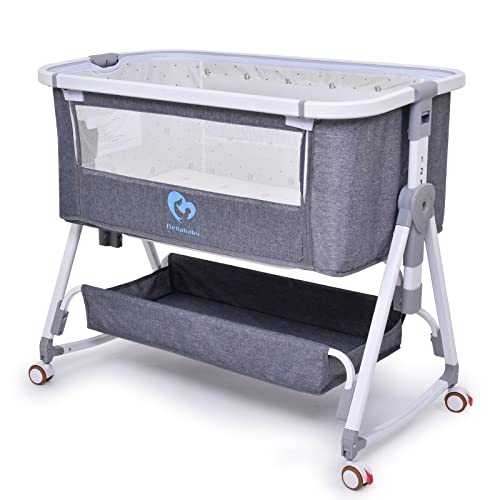Company Overview
-
Founded Date December 7, 1939
-
Posted Jobs 0
-
Categories Birds
Company Description
10 Misconceptions Your Boss Shares About Tots And Cots
Tots and Cots: A Comprehensive Guide for Parents
When it concerns ensuring a safe and comfy sleeping environment for children and young children, the options moms and dads make– varying from cribs to cots– can substantially affect their wellness. Today’s post dives deep into the complexities of choosing the very best sleeping arrangements for tots, emphasizing security, design, functionality, and how these options progress as a kid grows.

Comprehending Tots and Cots
Tots typically refer to children, particularly toddlers aged in between 1 to 3 years, while cots are the sleeping arrangements particularly created for babies and toddlers. The proper sleeping equipment for this age consists of different kinds of cots, cribs, and young child beds.
Types of Cots
Numerous designs exist to meet the varied needs of both moms and dads and children. Below is a list laying out the most typical kinds of cots offered:
-
Standard Crib
- A traditional crib is designed for babies and usually includes sides that can be changed to various heights.
-
Convertible Crib
- This kind of crib can transform into a young child bed, daybed, or full-sized bed as the child grows, making it a long-term financial investment.
-
Portable Crib
- Likewise called travel cots, these are light-weight and easily collapsible, ideal for taking a trip or smaller living areas.
-
Co-Sleeper
- A co-sleeper crib connects to the side of the moms and dads’ bed, enabling easy gain access to while making sure the baby has a separate and safe sleeping area.
-
Toddler Bed
- A toddler bed is a small bed that resembles a standard bed but is developed particularly for young children, typically featuring safety rails.
-
Mini Crib
- Mini cribs are smaller sized than standard cribs, making them a terrific choice for tight areas, but they are suitable for infants only.
Security Considerations
Ensuring safety is vital when choosing a cot for a child. Here are critical security guidelines parents should consider:
- Check for CPSC Certification: Ensure that the cot sticks to the Consumer Product Safety Commission (CPSC) requirements.
- Avoid Drop-Sides: Cots with drop-sides have been connected to safety threats, and the most recent safety regulations forbid them.
- Utilize a Firm Mattress: A firm bed mattress lowers the threat of suffocation and must fit snugly within the cot Sets.
- Keep Bedding Simple: Use a fitted sheet and avoid pillows, comforters, and stuffed animals that can position suffocation dangers.
- Follow Weight and Age Guidelines: Ensure the kid has actually not exceeded the cot’s weight limit and is still within the recommended age.
Transitioning from a Cot to a Toddler Bed
The shift from a cot to a toddler bed can be a psychological turning point for both parents and kids. Here are actions to alleviate the transition:
Timing
Deciding when to transition can be subjective, but it’s generally recommended to make the switch in between 18 months and 3 years, based upon aspects like:
- Physical Ability: If the child is climbing up out of the cot.
- Potty Training: Consider transitioning if the child is bathroom training and needs simpler access.
- Habits: Exhibiting signs of maturity, such as following guidelines or expressing a desire for independence.
Tips for Making the Transition Smooth
-
Include Your Child: Let the kid select their brand-new bed linen or bed decor to impart enjoyment about the change.
-
Keep Routine Consistent: Maintain the child’s bedtime routine to supply convenience throughout this period of modification.
-
Explain the Change: Discuss the transition to a young child bed favorably, making it sound like a terrific adventure.
-
Precaution: Place the bed versus the wall or usage bed rails to avoid falling during sleep.
Picking the Right Bed
When choosing a toddler bed, parents require to think about aspects like:
- Height: Low-profile beds are ideal for toddlers who may fall out throughout sleep.
- Resilience: Ensure the bed can hold up against active play in addition to sleep.
- Design and style: Choose a style that complements the child’s room and is interesting the kid.
Picking the best cot for your little one can be an overwhelming process, however understanding the choices readily available, essential security considerations, and the best timing for transitioning to a young child bed can make this journey simpler for moms and dads. Investing effort and time into these choices will guarantee that your child has a safe, comfortable, and nurturing sleep environment.
FAQs
1. What is the distinction in between a cot and a crib?
- A cot is usually a smaller bed designed for more youthful toddlers, while a crib is a larger bed that is usually ideal for babies up to 3 years of ages.
2. When should I move my child from a crib to a toddler bed?
- The transition time is usually in between 18 months and 3 years; this modification is based upon the kid’s physical abilities and behavioral signs.
3. How can I ensure my child is safe while sleeping?
- Constantly adhere to safety standards, utilize a firm bed mattress with a simple bed linen plan, and keep an eye on the cot’s weight limitation.
4. What should I do if my child tries to climb up out of the cot?
- If your kid is climbing out, it may be time to consider transitioning to a toddler bed to avoid falls.
5. Can I use the same mattress when transitioning?
- Normally, it is best to replace the crib bed mattress with one that specifies to the young child bed. Ensure it fits snugly and abides by security standards.
By considering these elements, parents can design healthy sleep habits and provide their kids with a secure environment that promotes restful sleep. Investing in quality sleeping arrangements will add to the child’s overall development and joy.



